11.10: Flatworms
- Page ID
- 1391
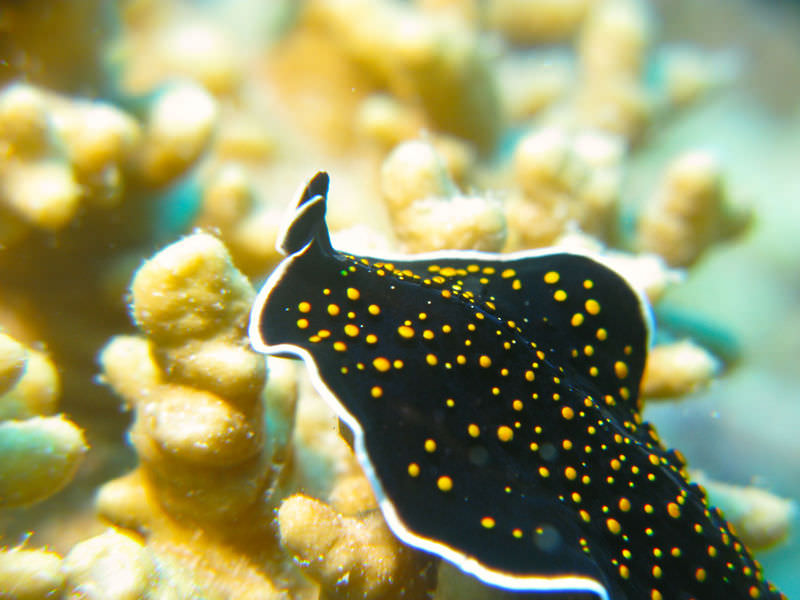
Would you believe that this gold-dotted creature is a flatworm?
No? Well it is. There are more than 25,000 different types of flatworms, so they can be very different in how they appear. And many don't even look like your typical worm.
Flatworms
Flatworms belong to the phylum Platyhelminthes. Examples of flatworms are shown in Figure below. There are more than 25,000 species in the flatworm phylum.
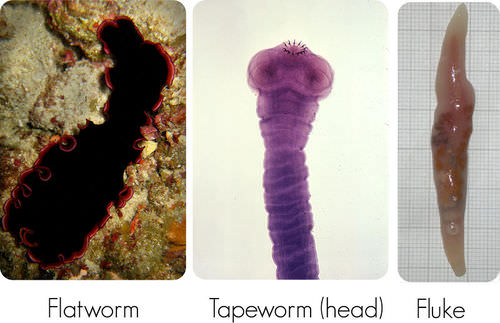 Platyhelminthes. Platyhelminthes include flatworms, tapeworms, and flukes.
Platyhelminthes. Platyhelminthes include flatworms, tapeworms, and flukes.Structure and Function of Flatworms
Flatworms range in length from about 1 millimeter (0.04 inches) to more than 20 meters (66 feet). They have a flat body because they do not have a coelom or even a pseudocoelom. They also lack a respiratory system. Instead, their cells exchange gases by diffusion directly with the environment. They have an incomplete digestive system.
Flatworms reflect several major evolutionary advances in invertebrates. They have three embryonic cell layers, including mesoderm. The mesoderm layer allows them to develop organ systems. For example, they have muscular and excretory systems. The muscular system allows them to move from place to place over solid surfaces. The excretory system lets them maintain a proper balance of water and salts. Flatworms also show cephalization and bilateral symmetry.
Flatworm Reproduction
Flatworms reproduce sexually. In most species, the same individuals produce both eggs and sperm. After fertilization occurs, the fertilized eggs pass out of the adult’s body and hatch into larvae. There may be several different larval stages. The final larval stage develops into the adult form, and the life cycle repeats.
Ecology of Flatworms
Both flukes and tapeworms are parasites with vertebrate hosts, including human hosts. Flukes live in the host’s circulatory system or liver. Tapeworms live in the host’s digestive system. Usually, more than one type of host is required to complete the parasite’s life cycle. Look at the life cycle of the liver fluke in Figure below. As an adult, the fluke has a vertebrate host. As a larva, it has an invertebrate host. If you follow the life cycle, you can see how each host becomes infected so the fluke can continue its life cycle.
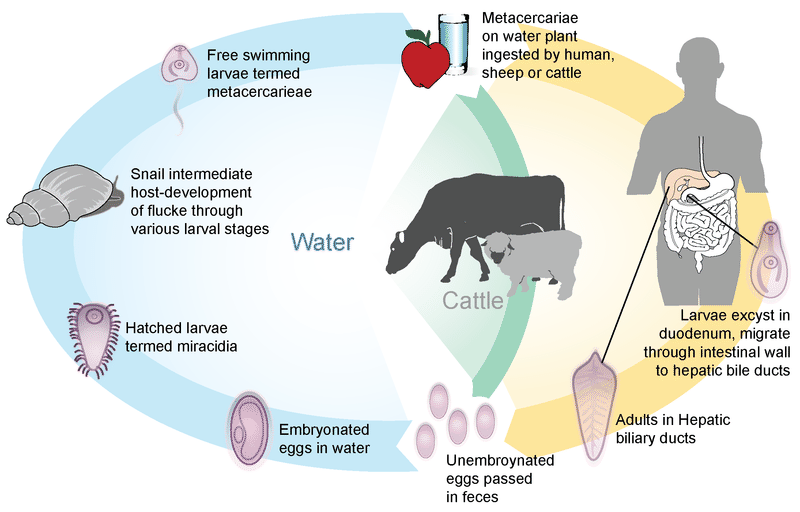 Life Cycle of the Sheep Liver Fluke. The sheep liver fluke has a complicated life cycle with two hosts. How could such a complicated way of life evolve?
Life Cycle of the Sheep Liver Fluke. The sheep liver fluke has a complicated life cycle with two hosts. How could such a complicated way of life evolve?Tapeworms and flukes have suckers and other structures for feeding on a host. Tapeworms also have a scolex, a ring of hooks on their head to attach themselves to the host (see Figure below). Unlike other invertebrates, tapeworms lack a mouth and digestive system. Instead, they absorb nutrients directly from the host’s digestive system with their suckers.
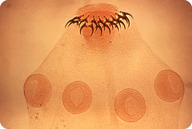 Tapeworm Suckers and Hooks. The head of a tapeworm has several suckers. At the very top of the head is a “crown” of hooks called a scolex.
Tapeworm Suckers and Hooks. The head of a tapeworm has several suckers. At the very top of the head is a “crown” of hooks called a scolex.Not all flatworms are parasites. Some are free-living carnivores. They eat other small invertebrates and decaying animals. Most of the free-living species live in aquatic habitats, but some live in moist soil.
Summary
- Platyhelminthes are flatworms such as tapeworms and flukes.
- Flatworms have a mesoderm cell layer and simple organ systems. They also show cephalization and bilateral symmetry.
- Many flatworms are parasites with vertebrate hosts. Some are free-living carnivores that live mainly in aquatic habitats.
Review
- Flatworms were the first to evolve the mesoderm. What advantage does the mesoderm provide?
- Describe specialized feeding structures of parasitic platyhelminthes.
- Some parasitic flatworms have a very complicated life cycle with more than one host. Infer why this might be adaptive.
| Image | Reference | Attributions |
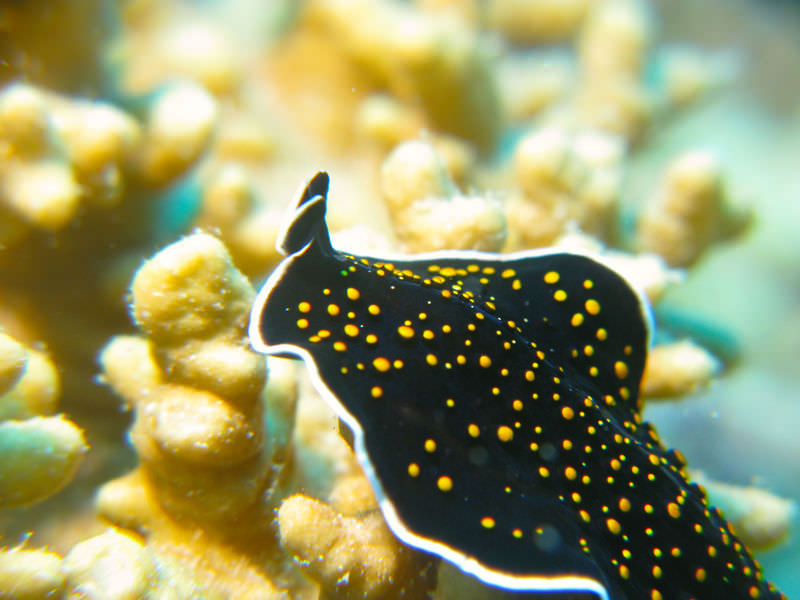 |
[Figure 1] | Credit: shutterstock.com Source: commons.wikimedia.org License: CC BY |
 |
[Figure 2] | Credit: Neville Wootton; Tapeworm: Courtesy of Centers for Disease Control and Prevention; Fluke: User:Anilocra/Wikipedia Source: http://www.flickr.com/photos/nevillewootton/9364345716/ License: CC BY |
 |
[Figure 3] | Credit: Mariana Ruiz Villarreal (LadyofHats) for CK-12 Foundation Source: CK-12 Foundation License: CC BY-NC 3.0 |
 |
[Figure 4] | Credit: Courtesy of the CDC Source: commons.wikimedia.org/wiki/File:Taenia_solium_tapeworm_scolex_with_its_four_suckers_and_two_rows_of_hooks_5262_lores.jpg License: Public Domain |

